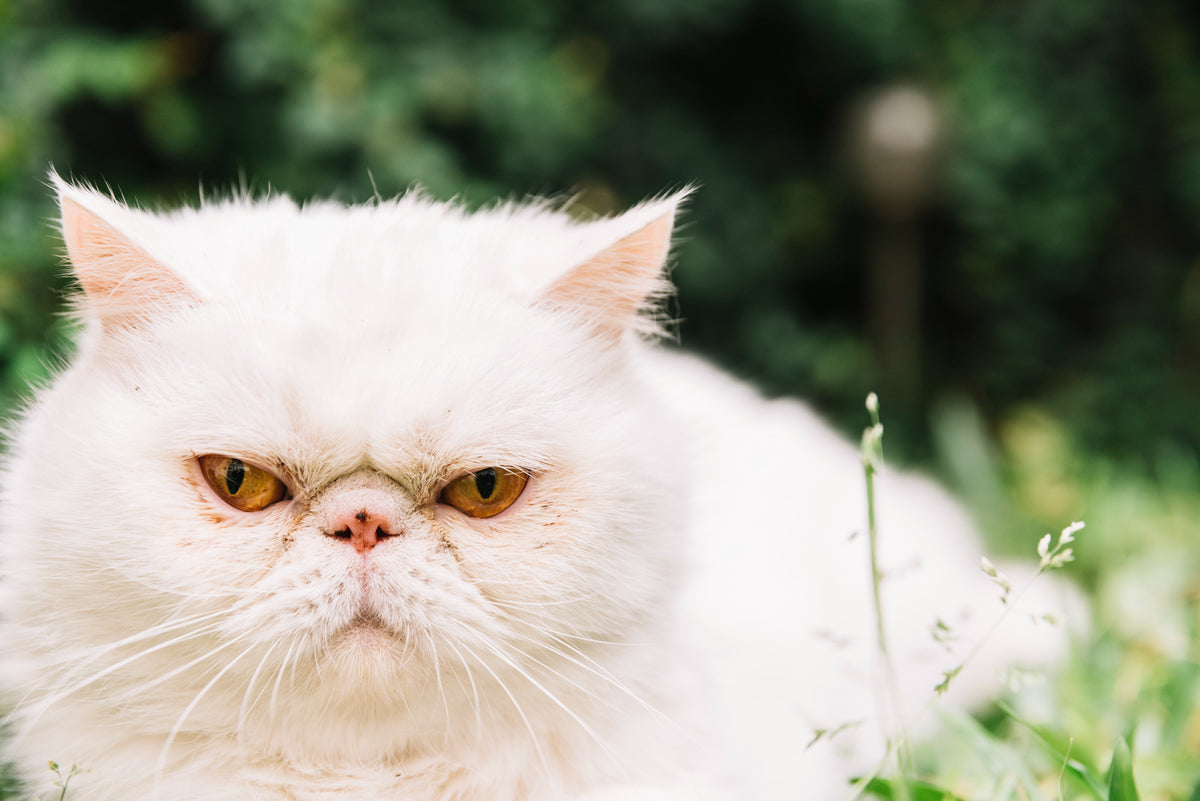Persian: An Elegant and Peaceful Companion Cat

Persian is one of the oldest cat breeds, appreciated for its soft character and its long and silky coat. Calm and little inclined to changes, he is an ideal companion for a peaceful life in an apartment. Its quiet nature and its need for routines make it a perfect cat for those who appreciate serenity.
- Origins and History
- Physical characteristics
- Character and behavior
- Maintenance and hygiene
- Food
- Persian in the blink of an eye
Origins and History

The ancestor of Persian is the Turkish angora, to whom he owes his long coat. During a trip to Asia in the 16th century, the explorer Pietro Della Valle fell in love with a cat he brings back with him in Persia. This feline immediately had a great success, until the court of King Louis XV. The Persians took part in the first feline beauty contests in England in 1871. The first standard in the breed was written in 1889 by Harisson Weir. Today, more than 200 Persian varieties exist around the world.
Persian has always aroused the enthusiasm, especially of the French bourgeoisie. Since the 1980s, he has become one of the favorite cats of the French.
Physical characteristics
- Body : Muscular and massive, medium -sized with short legs.
- Hair : Long, fine and silky with a thick undercoat.
- Pelage colors: Varied, ranging from black to white, passing through blue, red, cream and many others.
- Head : Massive and round with a short muzzle and a crushed nose.
- Eyes : Large, round and well spaced, matching the color of the coat.
- Ears : Triangular and fine, well proportioned to the head.
- Tail : Short and thick, well supplied in hairs.
Character and behavior
Persian is a calm and sweet cat, who likes routines and hardly appreciates changes. He is not very vocal and prefers to express his moods by his facial expressions. He appreciates moments of calm and hugs, but does not like to be manipulated frequently. He gets along well with children provided they respect his need for tranquility.
Although it is independent, Persian likes the presence of its owner and is affectionate. It is a docile and easy -to -live cat, which also appreciates moments of play and activity, even if it is not very energetic.
Living conditions
Persian adapts well to apartment life. A calm environment without too many disturbances is ideal for him. He appreciates cat trees and spaces where he can rest quietly. Although he likes tranquility, access to a secure garden to stretch the legs can also be beneficial.
Maintenance and hygiene

Persian requires regular and rigorous maintenance due to its long and dense coat. Daily brushing is essential to avoid knots and remove dead hairs. Baths must be limited so as not to damage your hair, but they may be necessary in case of significant dirt. The eyes and ears should be cleaned regularly to avoid infections. Persians are also sensitive to respiratory and renal diseases, as well as certain genetic skin infections. It is crucial to have them vaccinated and regularly consult a veterinarian.
Persian has a life expectancy from 10 to 17 years old.
Food
The Persian diet must be rich in quality proteins to maintain his health and his coat. High quality kibbles and ie are recommended, with a balance between dry and humid foods to ensure good hydration. The water requirements are important, and it is advisable to leave a source of fresh and clean water at its disposal permanently.
Nutritional need
Persian has specific nutritional needs to maintain optimal health:
- Quality proteins: Essential for muscle development and general health. Opt for protein sources such as chicken, fish or lamb.
- Healthy fats: Provide energy and contribute to healthy skin and coat. Omega-3 and omega-6 are particularly beneficial.
- Fibers: Help digestion and maintain good intestinal health. Warm vegetables and grains are good sources of fiber.
- Vitamins and minerals: A balanced diet must include vitamins and minerals to support the immune system and general cat health.
It is important to consult a veterinarian for personalized advice on the diet of your Persian.
Treaty recommendations
To complete the feeding of your Persian, Marly & Dan offers a range of premium treats adapted to the needs of your feline companion. Here are some of the most recommended options:
- Hair anti-boules treats: Enriched with natural fibers and enzymes, they facilitate the passage of hair ingested through the digestive system, thus reducing vomiting and discomfort.
- Counts skin & coat 100% salmon: For a high quality protein intake, supporting healthy skin and shiny coat.
- Salmon oil: Rich in omega-3 and omega-6, is a first quality food supplement that contributes to skin health and the shine of coat in cats.
Marly & Dan treats are made in France with natural and high quality ingredients, thus guaranteeing healthy and tasty snacks for your Persian. Give him the best by choosing Marly & Dan, a brand dedicated to excellence in animal nutrition.
Price and budget
The purchase price of a Persian is between € 400 and 2000 €. The annual maintenance cost varies between € 600 and € 800.
Persian in the blink of an eye
Faq
Persian appreciates hugs, but prefers moments of tranquility. He likes to be near his owner, but does not like to be manipulated frequently. It is an affectionate cat that shows its attachment in a discreet way.
Yes, Persian loses its hair, especially during the moulting periods. Daily brushing is necessary to avoid nodes and control the loss of hair.
Yes, Persian adapts very well to apartment life. He prefers calm and not very disturbed environments. Access to a secure garden is a plus, but not a necessity.


